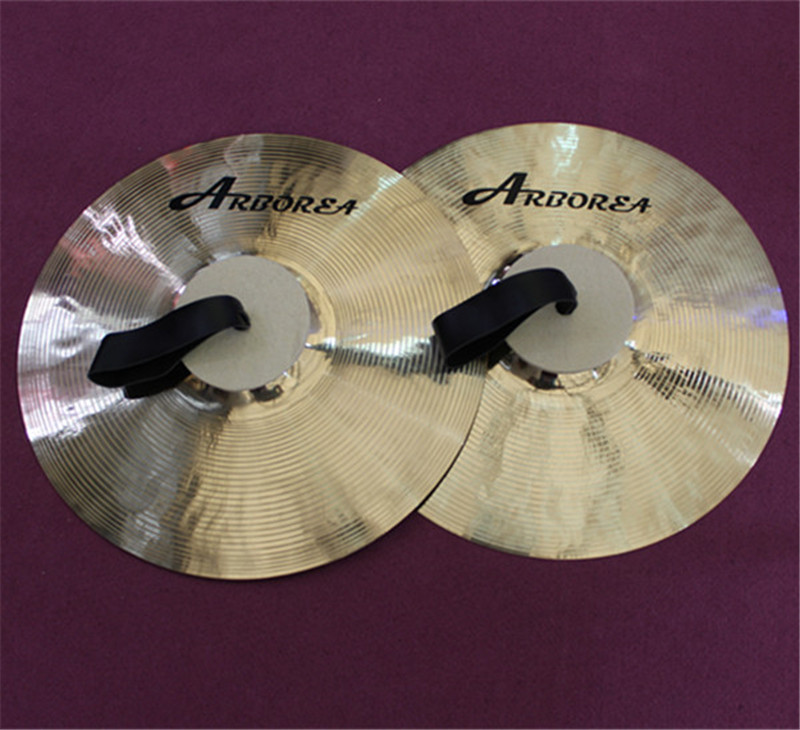Choosing the right marching cymbals is crucial for achieving the desired sound and visual impact in a marching band or drumline. This guide will help you understand the key factors to consider when selecting marching cymbals.

1. Cymbal Size and Weight
Marching cymbals typically range from 16 to 22 inches in diameter. The size and weight of the cymbals significantly affect their sound and playability:
- Smaller Cymbals (16-18 inches): These are lighter and easier to handle, making them suitable for fast, intricate passages and younger or less experienced players. They produce a higher-pitched, more articulate sound. Smaller cymbals are ideal for quick, precise articulations and are easier to manage during complex visual routines.
- Larger Cymbals (19-22 inches): These provide a fuller, louder sound with more sustain, ideal for powerful crashes and larger ensembles. However, they are heavier and require more strength to play effectively. Larger cymbals are better suited for creating a dramatic impact and are often used in outdoor performances where maximum projection is needed.
2. Material and Construction
Most marching cymbals are made from bronze alloys, which offer a good balance of durability and sound quality. The two primary types of cymbals based on their manufacturing process are:
- Cast Cymbals: Made from molten bronze, these cymbals are rolled, pressed, hammered, and lathed. They are generally more expensive but offer superior sound quality and durability, making them suitable for professional use. Cast cymbals produce a rich, complex sound with a wide range of overtones, making them a preferred choice for high-level performances.
- Sheet Cymbals: Stamped from large sheets of metal, these are more affordable and typically used by beginners or for practice purposes. They are less durable and have a more uniform sound. Sheet cymbals are often chosen for their cost-effectiveness and are suitable for educational settings or ensembles with budget constraints.
3. Cymbal Grips and Straps
The way cymbals are held and played is crucial for both sound production and player comfort. The most common grip for marching cymbals is the Garfield Grip, which distributes the weight across the entire palm, reducing hand tension and allowing for greater control.
- Leather Straps: These are traditional and provide a comfortable, secure grip. Leather straps are known for their durability and ability to conform to the player’s hand over time, offering a personalized fit.
- Nylon Straps: These are durable and less likely to stretch over time, but may not be as comfortable as leather. Nylon straps are often chosen for their resilience and lower maintenance requirements.
4. Sound Characteristics
When selecting cymbals, consider the following sound characteristics:
- Projection and Volume: Larger cymbals with bigger bells project more sound and are suitable for outdoor performances. Smaller bells offer more control over overtones and spread. The projection and volume of a cymbal are critical for ensuring that the sound carries well in various performance environments.
- Sustain: Thicker cymbals have more sustain, while thinner cymbals respond quicker and fade faster. Choose based on the musical context and desired effect. Sustain is important for creating lasting impacts and maintaining the energy of a performance.
- Articulation: The clarity of the initial sound when the cymbals are played. This is important for precise, rhythmic passages. Good articulation ensures that each note is distinct and contributes to the overall musicality of the performance.
5. Visual Effects
Marching cymbals are often used for visual effects in addition to their musical role. Techniques such as flips, twirls, and other “visuals” add a dynamic element to performances. Ensure the cymbals you choose are suitable for these techniques and that the players are comfortable executing them. Visual effects enhance the overall performance by adding a layer of showmanship and engaging the audience.
Conclusion
Selecting the right marching cymbals involves considering the size, weight, material, grip, sound characteristics, and visual potential. By understanding these factors and exploring different brands and models, you can find the perfect cymbals to enhance your marching band’s performance.For more detailed information and specific product recommendations, you can refer to resources such as the University of Toledo Drumline Cymbal Packet, the Pickerington Marching Tigers guide, and various online retailers like Music & Art and Guitar Center.
